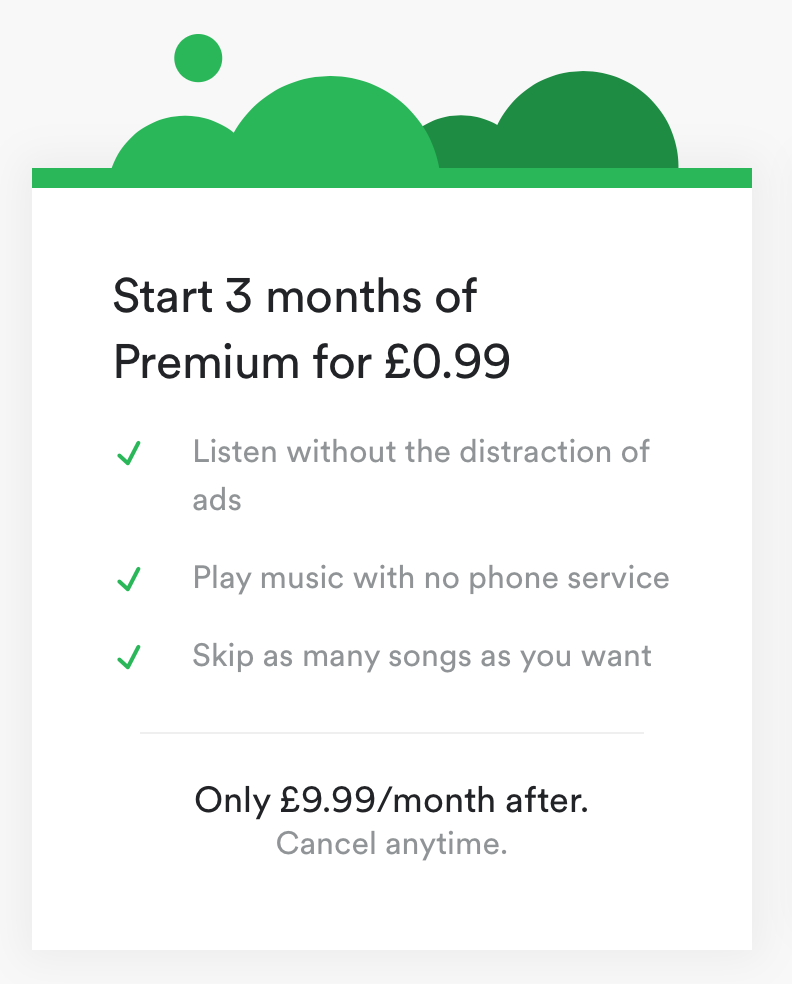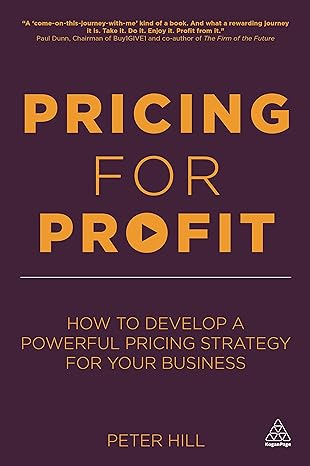Pricing Models 101: Understanding Fixed, Dynamic,and Value-Based Pricing
 PriceBeam
·
6 minute read
PriceBeam
·
6 minute read
.jpg?width=1140&height=300&name=Email%20banners%20%26%20blog%20images%20(1140%20x%20300%20px).jpg)
Pricing is one of the most critical components of a business strategy, directly influencing profitability, customer perception, and competitive positioning. However, determining the right pricing model can be complex, given the various approaches available. Among the most commonly used are fixed pricing, dynamic pricing, and value-based pricing. This article will explore these three models, their advantages and disadvantages, and how businesses can determine the best approach for their products or services.
Fixed Pricing: Stability and Simplicity
What is Fixed Pricing?
Fixed pricing is the simplest and most traditional pricing model, where a product or service is sold at a set price, regardless of the changes in the market or customer behaviour. Once established, this price remains constant until the business adjusts it, often on a scheduled basis or in response to significant changes in costs or market conditions.
Advantages of Fixed Pricing
Predictability: Both customers and businesses benefit from the predictability of fixed pricing. Customers know exactly what to expect, fostering trust and reducing decision-making time. For businesses, fixed pricing allows for easier forecasting and budgeting.
Ease of Implementation: Fixed pricing is straightforward to implement and manage. Businesses do not need sophisticated pricing algorithms or constant monitoring of market conditions.
Transparency: With fixed pricing, customers perceive the pricing as fair and transparent, which can enhance brand loyalty and trust.
Disadvantages of Fixed Pricing
Inflexibility: Fixed pricing does not allow businesses to respond quickly to changes in the market, such as fluctuations in demand, costs, or competition. This inflexibility can lead to missed opportunities or losses.
Missed Revenue Opportunities: In cases where customers are willing to pay more for a product, fixed pricing prevents businesses from capitalizing on these opportunities.
When to Use Fixed Pricing
Fixed pricing is ideal for businesses operating in stable markets with little fluctuation in demand or costs. It is also suitable for products or services where simplicity and transparency are valued by customers. Here are some situations where fixed pricing is particularly advantageous:
Standardized Products or Services: If your business offers products or services that do not vary significantly in cost or value over time, fixed pricing is ideal. For example, retail products like clothing or electronics, where production costs and market demand are relatively stable, benefit from fixed pricing.
Building Trust and Customer Loyalty: Fixed pricing works well in industries where customer trust and long-term relationships are critical. For example, subscription services, such as gym memberships or software-as-a-service (SaaS), often use fixed pricing to provide consistency, making it easier for customers to budget and plan
Market Positioning: Businesses that want to position themselves as premium or luxury brands might use fixed pricing to reinforce the perception of quality and exclusivity. A consistent price can signal reliability and value, which is crucial for high-end products.
Dynamic Pricing: Flexibility and Responsiveness
What is Dynamic Pricing?
Dynamic pricing, also known as demand-based or surge pricing, is a strategy where product prices fluctuate based on factors like demand, supply, competition, customer behaviour, seasonality, and market conditions. For instance, a retailer might reduce prices on certain items during a slow period to attract more customers or increase prices on popular items during a peak season to maximize revenue.
Advantages of Dynamic Pricing
Maximized Revenue: Dynamic pricing allows businesses to maximize revenue by adjusting prices in response to demand. For example, higher prices can be charged during peak demand periods, while discounts can attract customers during low-demand periods.
Competitive Advantage: By adjusting prices in response to competitors, businesses can remain competitive and capture market share.
Real-Time Flexibility: Dynamic pricing provides the flexibility to respond to real-time changes in the market, making it particularly useful in fast-paced industries.
Disadvantages of Dynamic Pricing
Complexity: Implementing dynamic pricing requires sophisticated technology and data analytics to monitor market conditions and adjust prices accordingly.
Customer Perception: If not managed carefully, dynamic pricing can lead to customer dissatisfaction, especially if prices fluctuate unpredictably. Customers may feel that they are being unfairly charged or that the pricing is opaque.
Regulatory Risks: In some industries, dynamic pricing can attract regulatory scrutiny, especially if customers perceive it as price gouging.
When to Use Dynamic Pricing
Dynamic pricing is most effective in fast-paced, competitive markets where demand and supply fluctuate frequently. Consider the following scenarios where dynamic pricing can be highly beneficial:
Industries with Fluctuating Demand: In industries like travel, hospitality, and entertainment, where demand varies by season, day, or even hour, dynamic pricing allows businesses to maximize revenue by adjusting prices in real time. For example, airlines and hotels often increase prices during peak seasons or events and lower them during off-peak periods to attract customers.
Perishable Inventory: For businesses dealing with perishable goods or services, dynamic pricing helps optimize sales before the product or service becomes obsolete. This is common in sectors like food delivery, event tickets, or any service that has a time-limited value.
Highly Competitive Markets: In e-commerce and retail, where competitors' pricing strategies can change rapidly, dynamic pricing allows businesses to stay competitive. By continuously monitoring and adjusting prices based on competitors and market trends, businesses can capture more market share and increase sales.
Maximizing Revenue from Diverse Customer Segments: Dynamic pricing can be used to target different customer segments with tailored prices. For example, ride-sharing services like Uber use surge pricing during high-demand periods, capitalizing on customers' willingness to pay more for immediate availability.
Value-Based Pricing: Aligning Price with Perceived Value
What is Value-Based Pricing?
Value-based pricing is a strategy where prices are set primarily based on the perceived value of the product or service to the customer, rather than on cost or competition. This model focuses on understanding the customer's needs and willingness to pay, allowing businesses to price their offerings according to the value they deliver.
Advantages of Value-Based Pricing
Customer-Centric: Value-based pricing aligns with the customer's perception of value, often leading to higher customer satisfaction and loyalty.
Higher Margins: By pricing based on value rather than cost, businesses can achieve higher profit margins, especially if the perceived value is significantly higher than the cost of production.
Differentiation: Value-based pricing allows businesses to differentiate their products or services based on unique value propositions, rather than competing solely on price.
Disadvantages of Value-Based Pricing
Complexity in Determining Value: Accurately assessing the perceived value of a product or service can be challenging and requires deep customer insights and market research.
Market Education Required: In some cases, customers may need to be educated about the value of the product or service to justify the price, which can require additional marketing efforts.
When to Use Value-Based Pricing
Value-based pricing is most effective in markets where the perceived value of a product or service can significantly influence customer willingness to pay. Here are scenarios where value-based pricing is particularly advantageous:
Innovative or Unique Products: If your business offers products or services that are innovative or have unique features not found in competitors' offerings, value-based pricing allows you to charge a premium. For instance, technology companies launching groundbreaking gadgets or software often use this model to capitalize on early adopters' willingness to pay more for cutting-edge features.
Personalized or Custom Solutions: If your business provides highly personalized or customized products or services, value-based pricing enables you to align prices with the unique value offered to each customer. This is common in consulting, or custom software development, where the value derived from the service is specific to each client.
Strong Brand Reputation: A strong brand can justify higher prices if customers associate it with reliability, innovation, or superior products/customer service. When a brand has established trust and loyalty, customers are often willing to pay a premium, making value-based pricing a suitable approach. Tesla’s value-based pricing is supported by its brand reputation for innovation, environmental sustainability, and advanced technology, allowing it to command higher prices than many traditional automakers.
Varied Customer Perception: In markets where customers have different perceptions of value based on their individual needs, value-based pricing allows you to segment customers and price accordingly. This strategy can maximize revenue by capturing more value from customers willing to pay more. Airlines use value-based pricing with their seat classes. Business travellers may pay significantly more for a first-class ticket due to the added comfort, service, and flexibility, compared to economy travellers.
Luxury and Premium Brands: For businesses that sell luxury goods, high-end services, or premium experiences, value-based pricing is crucial. Customers purchasing luxury cars, designer fashion, or exclusive vacation packages often base their decisions on perceived value rather than cost, allowing businesses to set higher prices.
Choosing the Right Pricing Model
.png?width=562&height=281&name=Blog%20-%20Size%20for%20not%20blurry%20images%20(32).png)
Choosing the right pricing model is a strategic decision that can greatly influence your business's success. While various models offer different benefits, the key is to select one that aligns with your business objectives, market conditions, and the unique value your product or service provides to customers.
Fixed Pricing offers the advantage of stability and predictability, making it a good choice for businesses with standardized products or services in stable markets. This model builds customer trust through consistency and simplicity. However, it can sometimes limit a business’s ability to capture the full potential of its offerings, particularly when the product or service has a unique value that customers are willing to pay more for.
Dynamic Pricing provides flexibility, allowing businesses to adjust prices in real-time based on demand, competition, or market conditions. However, dynamic pricing can also lead to customer dissatisfaction if not managed carefully, as frequent price changes may be perceived as unfair or confusing.
Value-based pricing focuses on setting prices according to the perceived value of the product or service to the customer, rather than on production costs or competitor pricing. This approach allows businesses to align their pricing with the actual value they deliver, often leading to higher profit margins and stronger customer relationships.
Ultimately, the choice of pricing model should be driven by your understanding of your market, customers, and long-term business goals. In some cases, a combination of these models may be the best approach, allowing you to tailor your pricing strategy to different products, services, or customer segments. By carefully selecting the right pricing model, you can achieve a balance between profitability, competitiveness, and customer satisfaction, ensuring that your prices reflect both the value you provide and the expectations of your customers.
Unsure which pricing model is for you? Book a demo ⬇️
.png?width=400&height=100&name=PBLogoTransparent%20(1).png)




